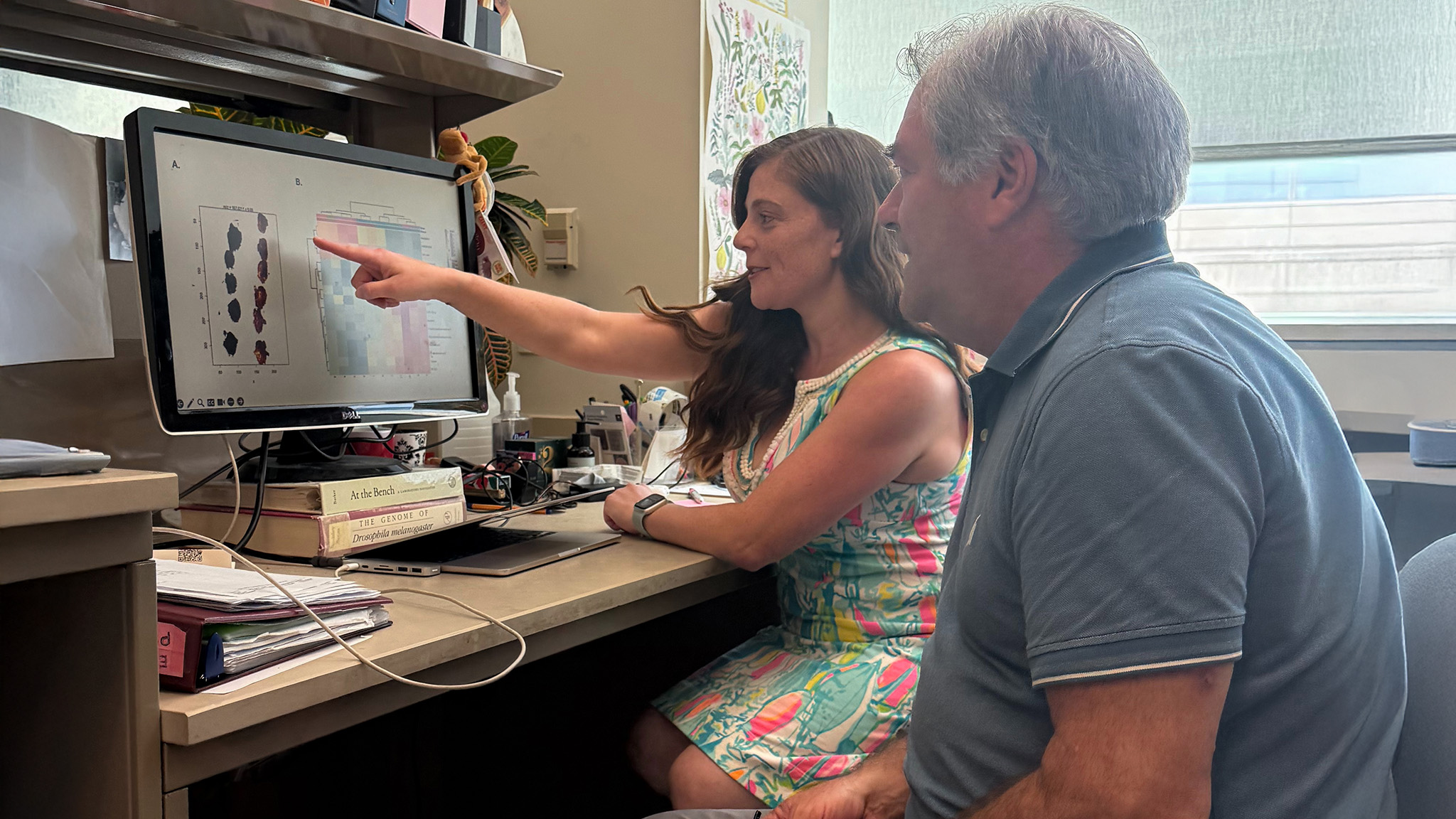Metabolic and Mitochondrial Implications of Crosstalk Between the Insulin and cAMP Signaling Pathways in Fragile X Syndrome

Tom Jongens, PhD
Principal Investigator
Eliana D. Weisz, PhD
FRAXA Postdoctoral Fellow
University of Pennsylvania
Philadelphia, PA
2025-2026 Grant Funding: $100,000
Summary
This project uses fruit fly models to study how Fragile X disrupts key brain signaling pathways and to test potential treatments. The Jongens lab previously identified metformin and PDE4 inhibitors as promising therapies; now Drs. Weisz and Jongens will screen additional drug candidates already approved for other uses. They’ll use advanced imaging to track how these treatments affect brain metabolism and where the drugs go in the brain.
This approach could uncover new treatment strategies and provide more precise ways to measure if a therapy is working.
The Science
While the causal gene was first cloned and identified in 1991, there is still much to be learned about the molecular underpinnings of Fragile X syndrome. Our incomplete understanding of the precise mechanisms that underlie Fragile X syndrome pathogenesis has precluded the identification of effective therapeutic approaches to ameliorate the quality of life of affected individuals. Despite the advancement of several compounds to clinical trials, findings at the bench have had mixed success at the bedside. Rather, it has become evident that the Fragile X field would benefit from the optimization of preclinical clinical strategies to identify therapeutic candidates and paradigms to predict their clinical efficacy.
One promising route to identify treatments for Fragile X has been the utilization of fruit flies to identify conserved cellular signaling pathway defects that can be targeted therapeutically. The fruit fly, Drosophila melanogaster, is a powerful system to model human disease due to remarkable similarities with humans at the molecular, genetic, and behavioral levels. Due to their short lifespan, genetic tractability, and inexpensive husbandry, Drosophila allow us to rigorously test the efficacy of therapeutic approaches in a high-throughput manner that is not feasible in vertebrate systems.
Our studies based on the normalization of aberrations in cAMP and insulin signaling in the Drosophila model of Fragile X syndrome were the first to identify PDE4 inhibitors and metformin as potentially beneficial for Fragile X patients. To date, clinical data suggests that both of these treatment strategies are efficacious at mitigating symptoms that Fragile X patients' experience.
In Aim 1 of this fellowship application, we plan to evaluate potential crosstalk between signaling pathways in our fly model of Fragile X syndrome. We also plan to screen additional clinically available PDE4 inhibitors to ascertain whether any of these compounds merit further investigation in other preclinical models of Fragile X syndrome.
Subsequently, in Aim 2, we plan to use cutting-edge technology to spatially map metabolic changes in the brains of our Fragile X syndrome flies. This technology will also enable us to visualize and quantify where certain pharmacologic compounds localize in the brain. We will then ascertain whether specific pharmacologic compounds impact any of the metabolic changes that we observe in the brains of Fragile X syndrome flies.
These experiments have the potential to reveal new avenues for treatment of Fragile X as well as to provide clinicians with objective, quantifiable tools to assess treatment efficacy.
